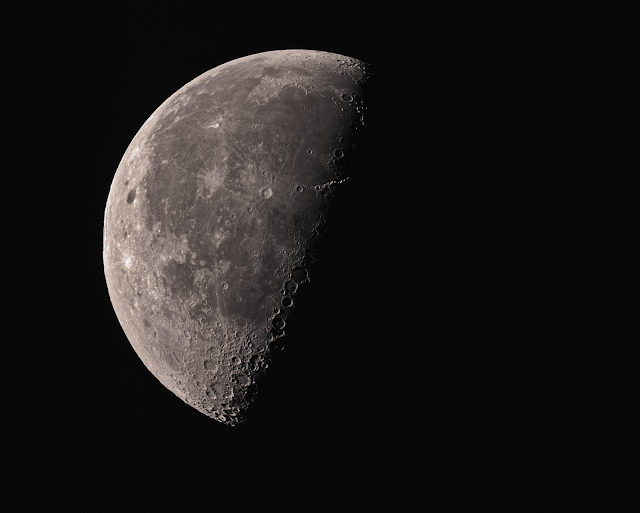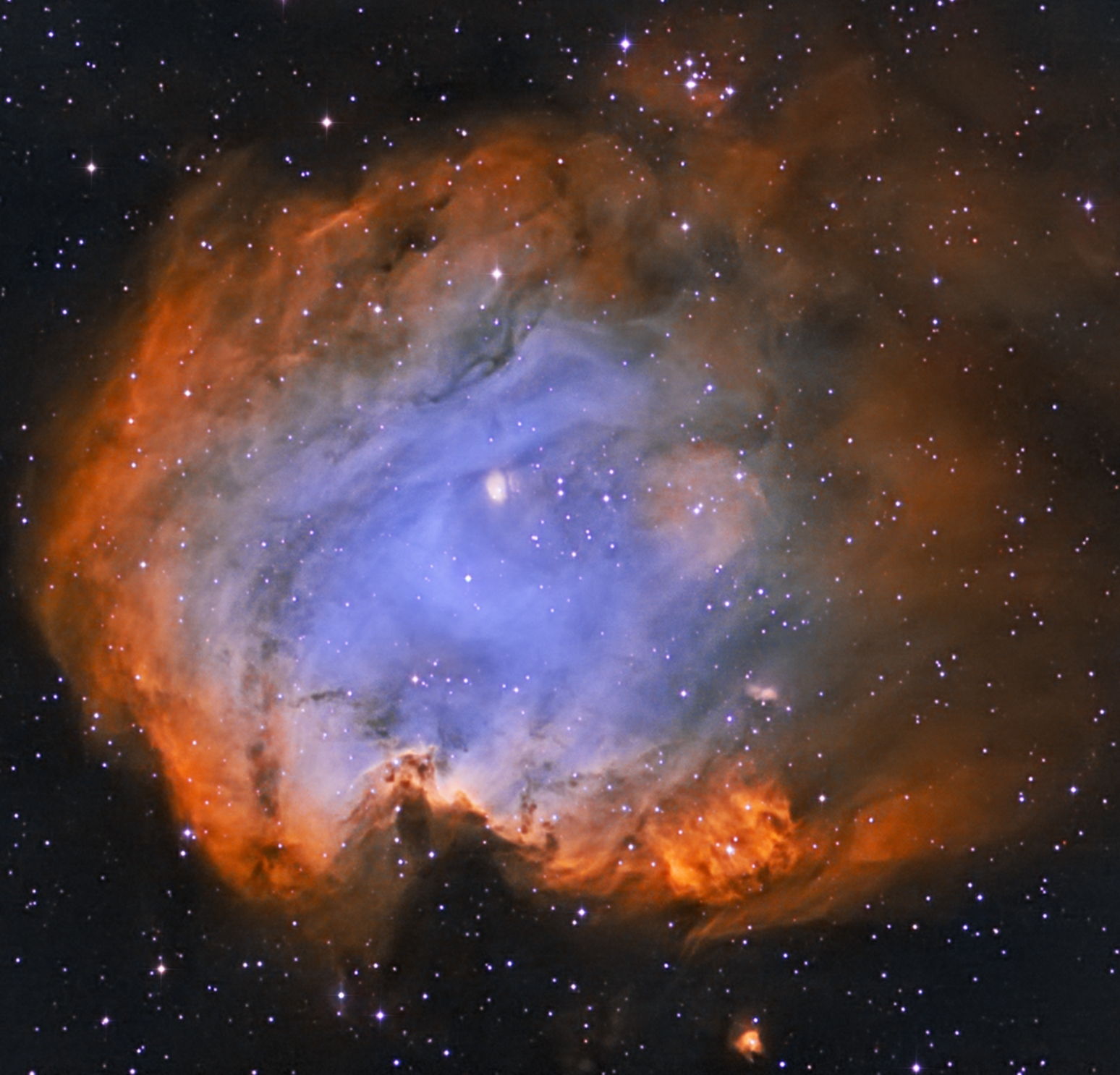NGC 6820 is an emission nebula that surrounds open cluster NGC 6823 in Vulpecula, near M27, the Dumbbell Nebula. The nebula NGC 6820 is also called Sharpless catalog Sh 2-86.
The most striking feature is the trunk-like pillar of dust and gas protruding from the east side of the nebula towards the open cluster, NGC 6823 in the west. The center of the open cluster is about two million years old and is predominantly represented by many young, bright blue stars. Outer parts of the cluster intimately involving pillars of emission nebula NGC 6820, contain even younger stars. The huge pillars of gas and dust are probably formed when surrounding gas and dust is pushed and eroded away by radiation from nearby stars. Remarkable dark globules of gas and dust are also visible in the nebula, much as is seen in the better known Eagle Nebula in Serpens or the Lagoon Nebula in Sagittarius.
Open star cluster NGC 6823 is about 50 light years across and lies about 6000 light years away
*From Wikipedia, the free encyclopedia
Instruments and exposure data:
W.O FLT110 with dedicated TMB field flattener
FeatherTouch 3'' focuser
Starizona MicroTouch autofocuser
SBIG ST10XME CFW9
W.O ZS80 ED
Meade DSI
Filters: 5nm Hα Astrodon
Sky-Watcher EQ6 Pro
Lum:39*10min bin1x1
Total exposure time:6h 30min
Location: Vironas,Athens Greece
Meade DSI
Filters: 5nm Hα Astrodon
Sky-Watcher EQ6 Pro
Lum:39*10min bin1x1
Total exposure time:6h 30min
Location: Vironas,Athens Greece



















































